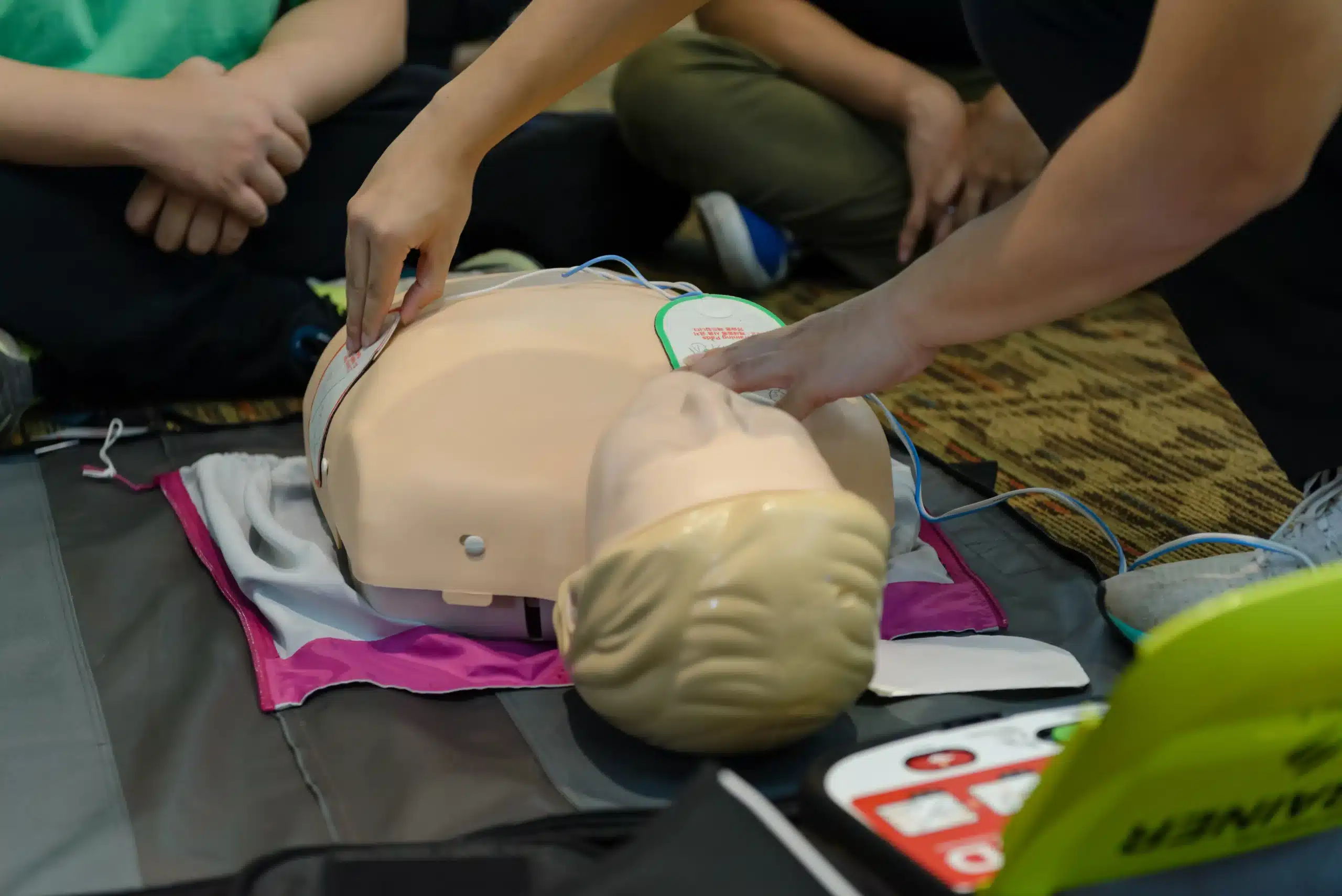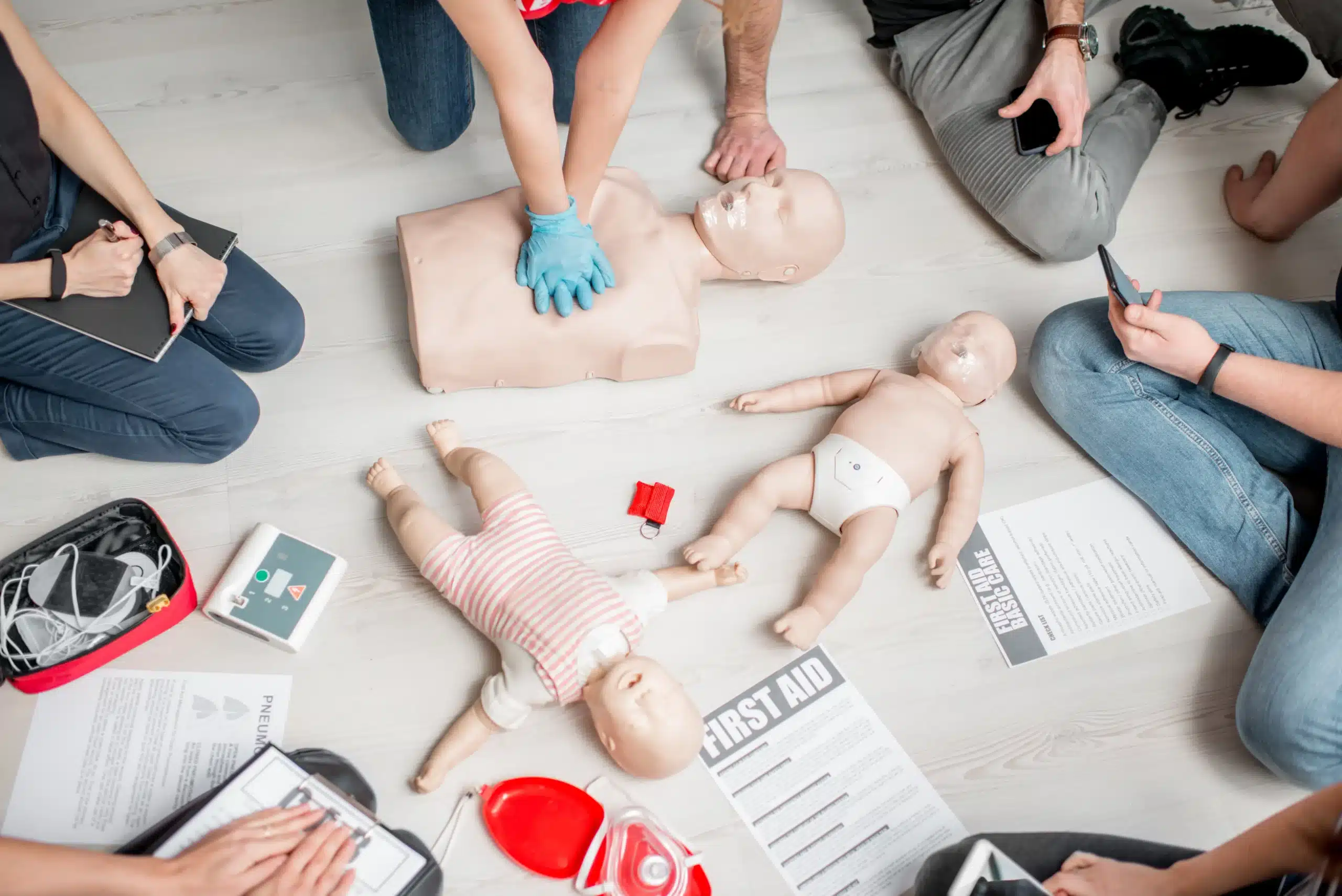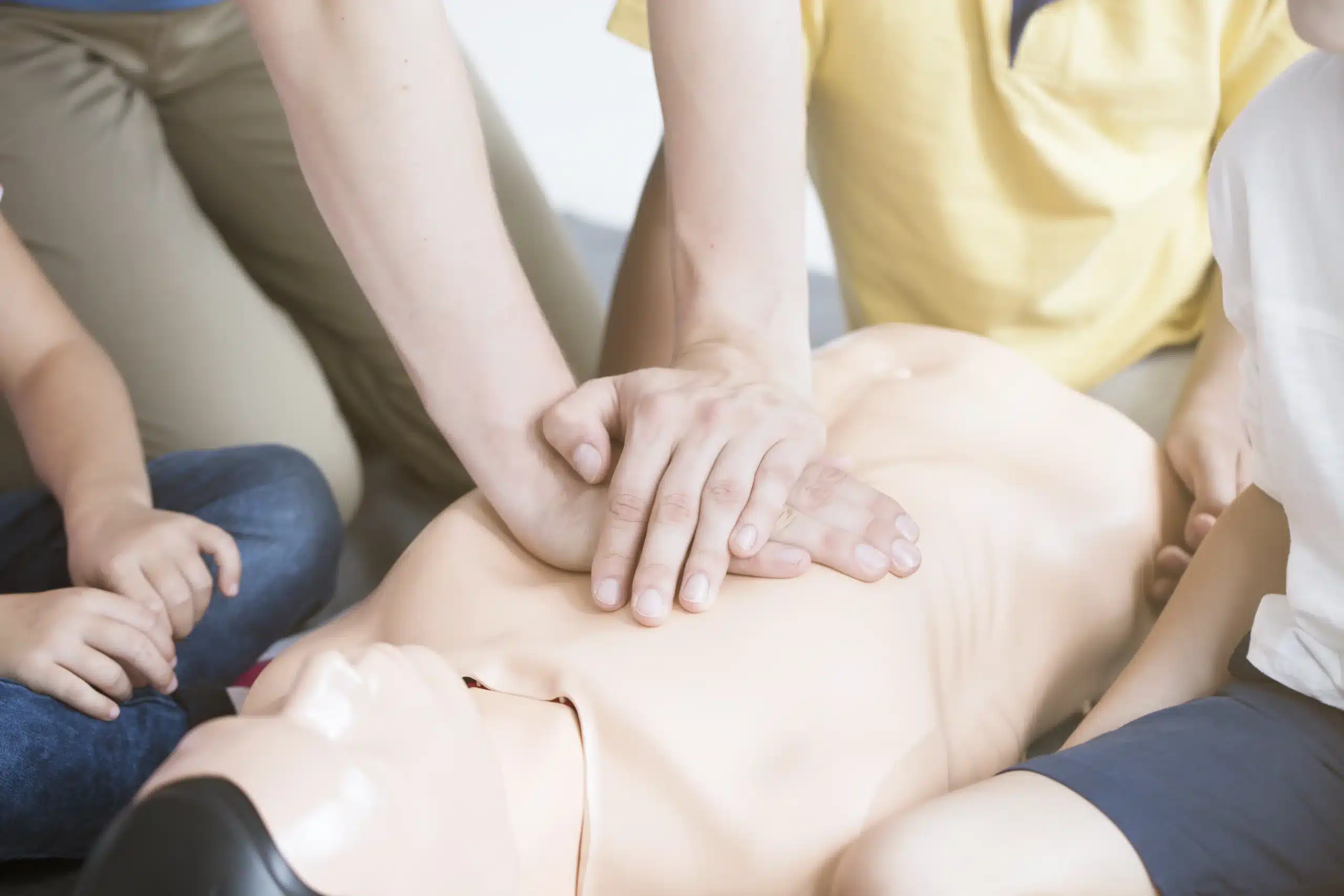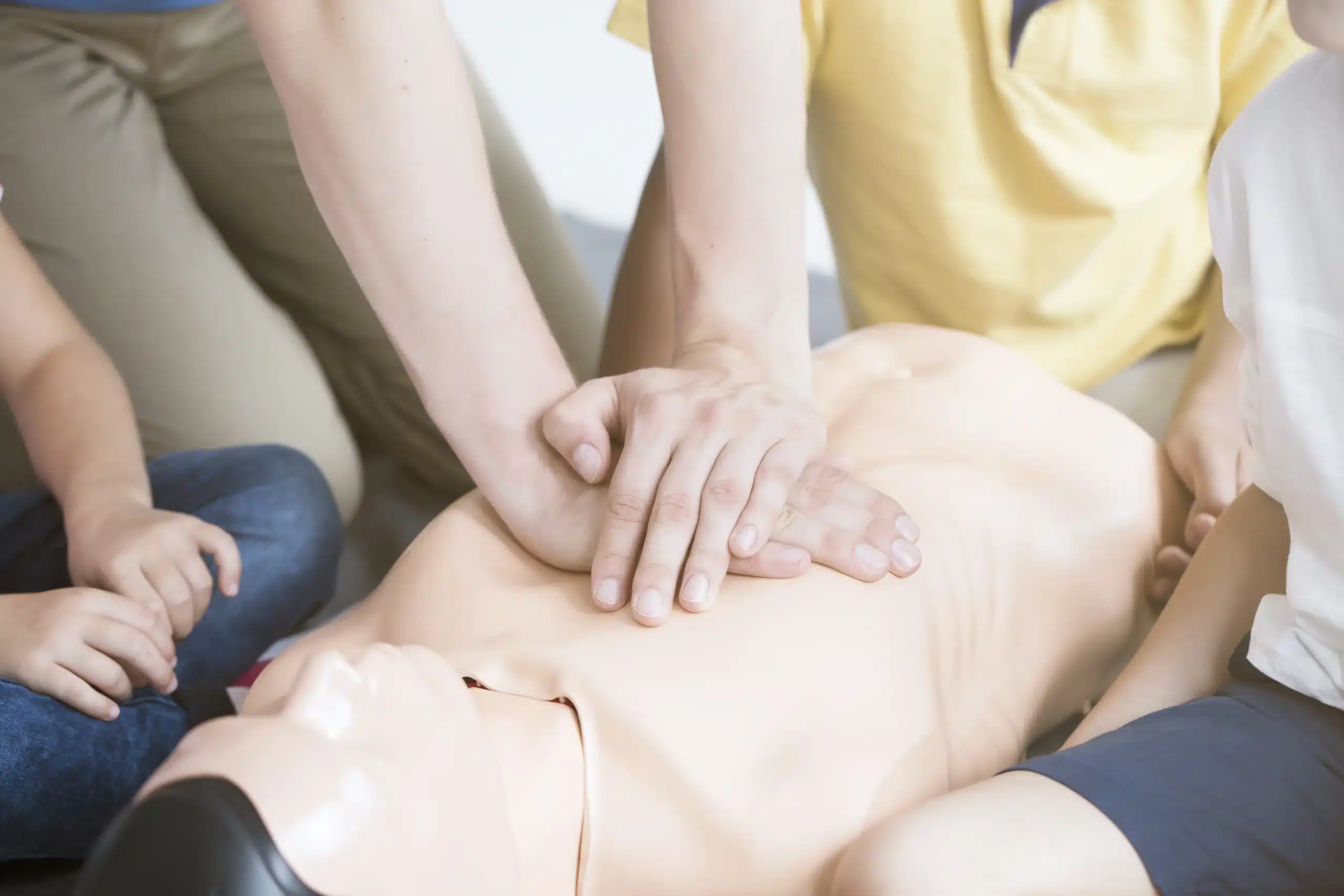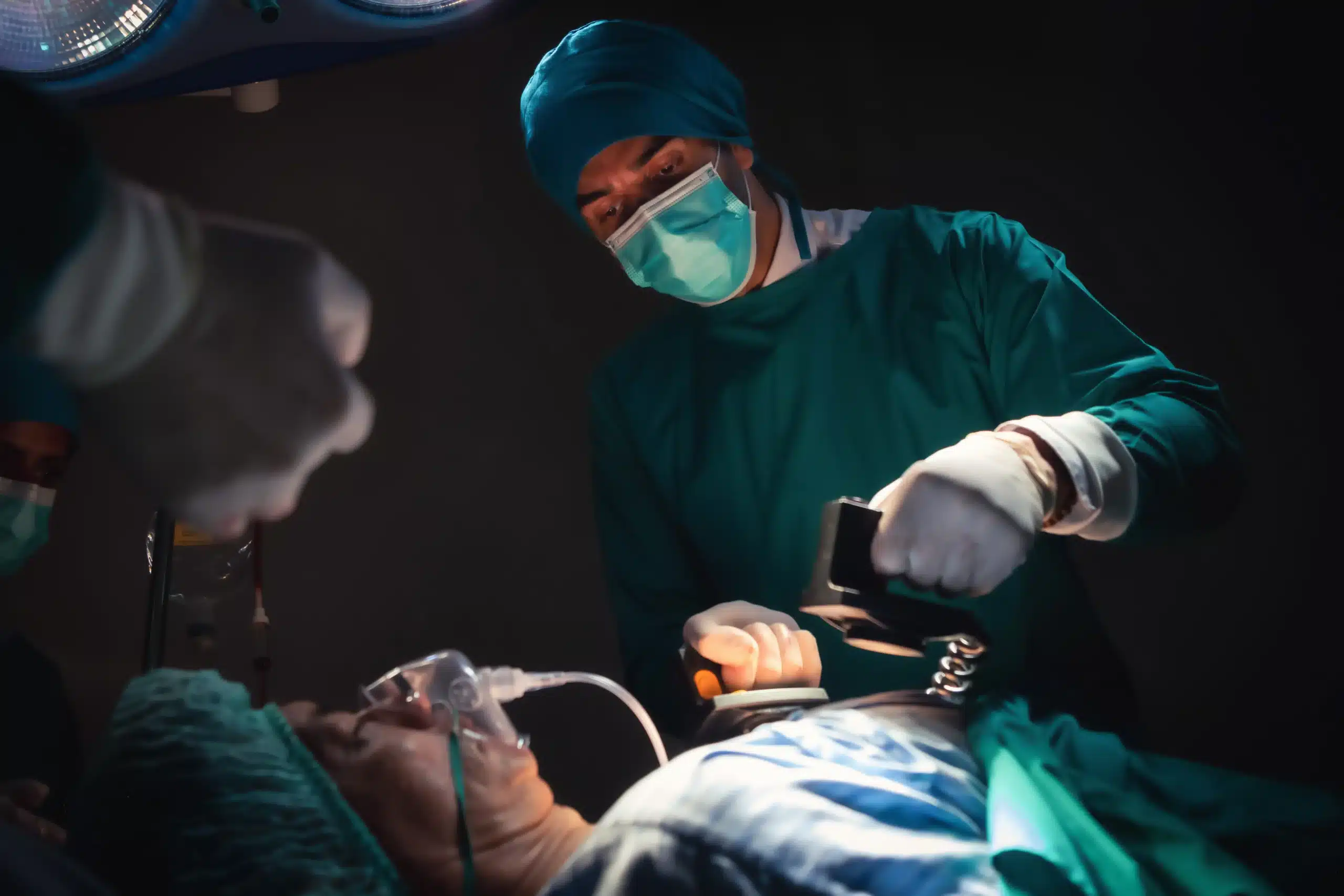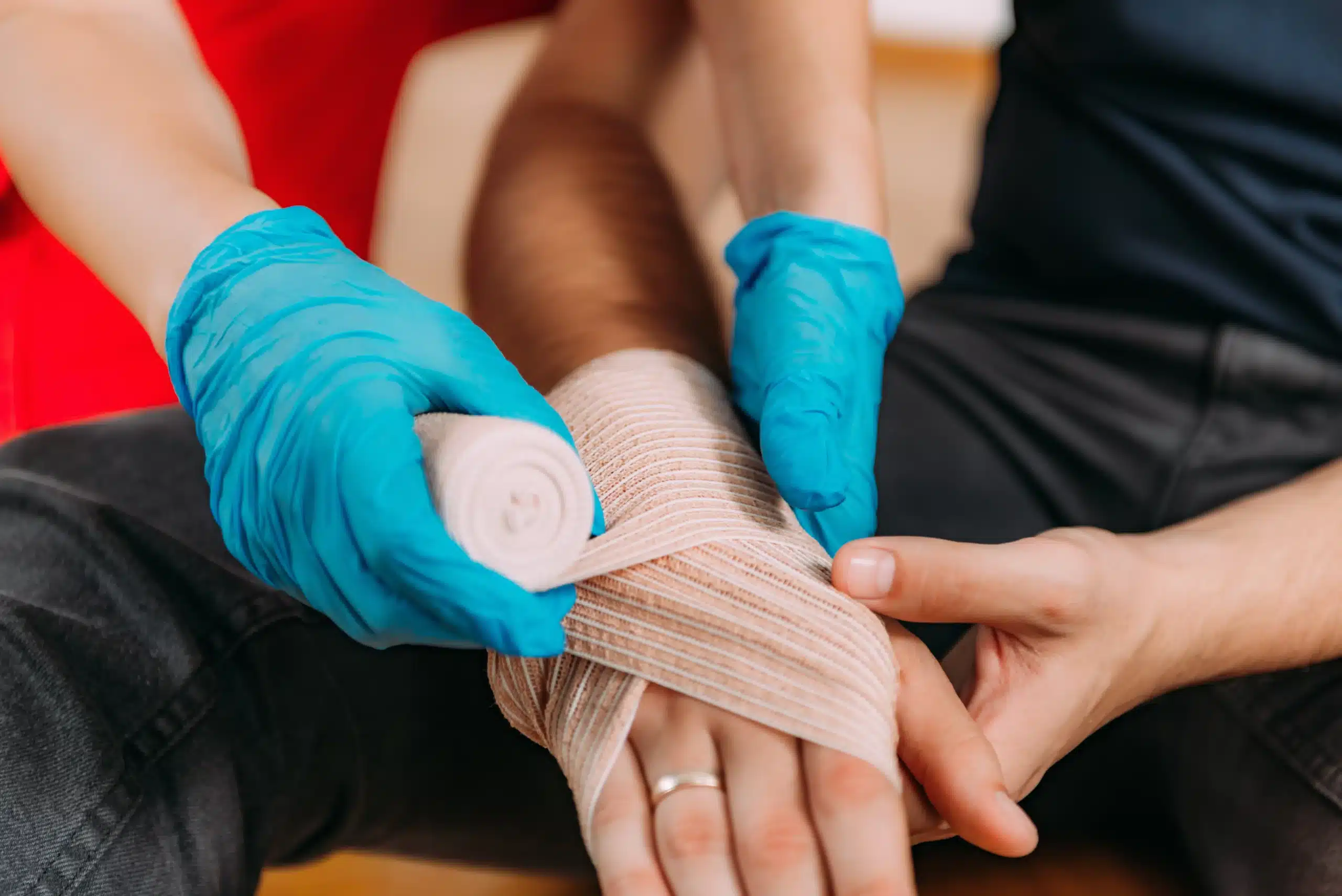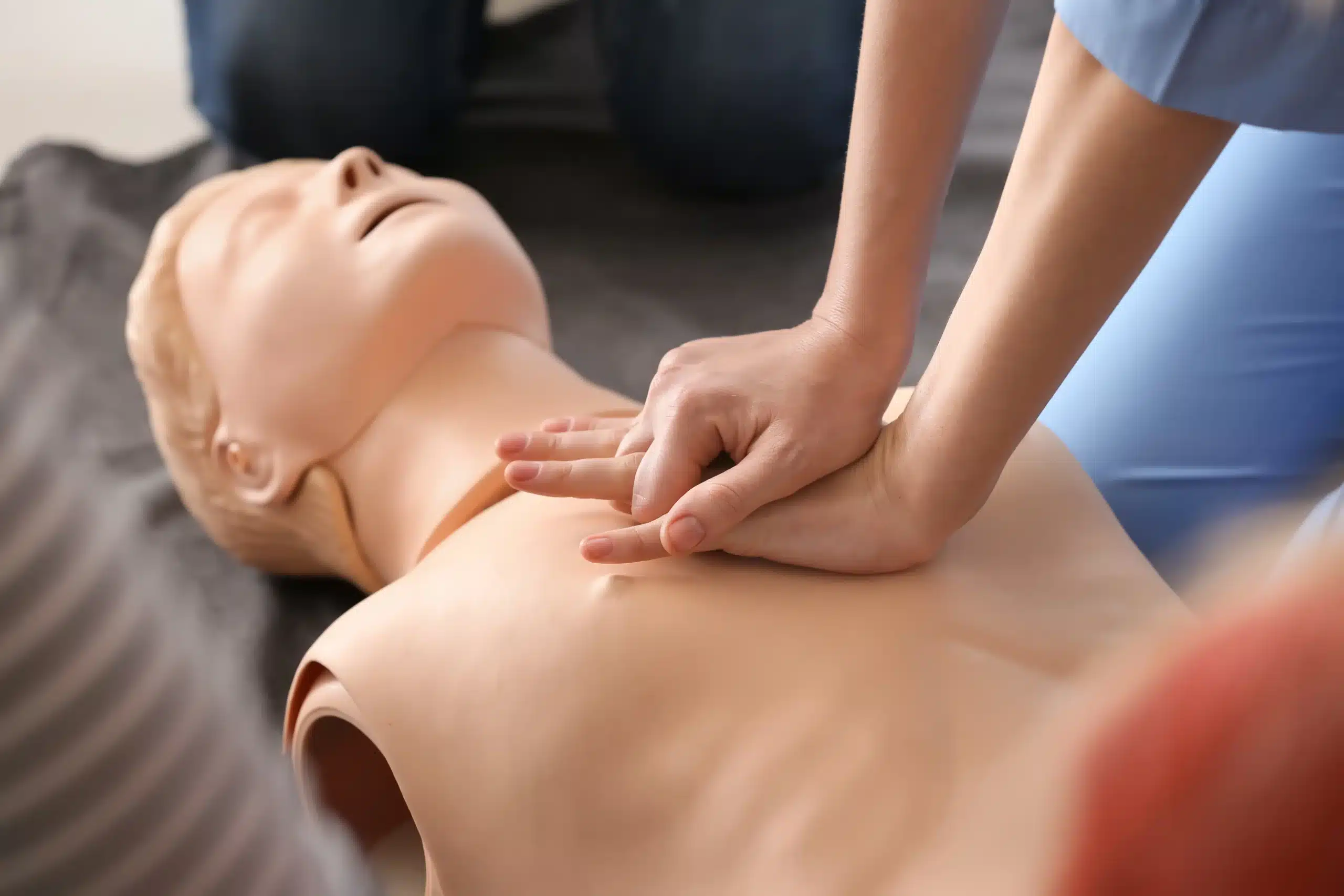Working in healthcare means being prepared for anything. Your BLS certification is a critical part of that preparedness, enabling you to respond effectively in emergencies. But certifications expire, and skills can fade without regular practice. That’s why BLS recertification is so vital. This guide is your roadmap to navigating the recertification process, whether you’re looking for convenient “bls recertification near me” options or prefer the flexibility of online courses. We’ll explore the different course formats, discuss the costs involved, and provide tips for staying sharp between certifications. Let’s ensure your life-saving skills are always ready.
Key Takeaways
- BLS Recertification Keeps Your Skills Sharp: Regularly refreshing your BLS certification ensures you’re prepared to handle emergencies with the latest techniques and guidelines. It’s a commitment to providing the best possible care.
- Choose the Right Course for Your Needs: Explore different course formats, including in-person, online, and blended learning, to find the best fit for your schedule and learning style. Consider factors like cost, accreditation, and employer requirements.
- Maintain Your Skills Through Practice and Ongoing Learning: Staying proficient in BLS involves more than just recertification. Regular practice, staying updated on new guidelines, and utilizing resources like the RQI program will keep your skills sharp and your confidence high.
What is BLS Recertification?
BLS recertification is how healthcare providers and other qualified professionals keep their Basic Life Support skills sharp. It’s a refresher course designed to ensure you’re up-to-date on the latest emergency care guidelines. But why is recertification so important, and what does it entail? Let’s break it down.
What is BLS & Why Recertify?
BLS certification equips you with the knowledge and skills to respond to life-threatening emergencies. Think CPR, using an AED, and providing basic airway management. These are essential skills for anyone in healthcare, and maintaining proficiency is critical. Your BLS certification is typically valid for two years. There’s no grace period after it expires, so staying on top of recertification is key. The American Heart Association (AHA) offers several ways to renew, including online courses and in-person classes, making it convenient to fit into your schedule. Contact us today to learn more about our BLS certification and recertification courses.
Key Recertification Skills
A BLS recertification course isn’t just a formality; it’s a chance to hone your life-saving skills. You’ll review the latest guidelines from the AHA, reinforce the Chain of Survival, and practice CPR and AED use on adults, children, and infants. The course also covers critical differences in rescue techniques based on age, including bag-mask techniques, rescue breathing, and how to help someone who is choking. These skills are crucial for responding effectively in various emergency situations. Register for a class to gain these essential skills.
Common Recertification Misconceptions
One common misconception is that all BLS recertification courses are created equal. The requirements, including course format, location, and fees, can vary. It’s important to do your research and choose a course that meets your needs and aligns with your budget. Our low price guarantee ensures you get the best value for your training. Another misconception is about the renewal timeframe. If your certification has lapsed, you might need to take the full BLS course again rather than just a refresher. Check with your employer or certifying organization, like the American Red Cross, to confirm their specific requirements. Understanding these details can save you time and ensure a smooth recertification process.
Find BLS Recertification Courses Near You
Finding the right BLS recertification course can feel overwhelming, but it doesn’t have to be. Here’s a breakdown of where to look and what to expect:
Los Gatos CPR Classes
If you’re in Los Gatos, San Jose, or Saratoga, California, Los Gatos CPR Classes offers convenient BLS recertification courses seven days a week. As an American Heart Association Training Center, they provide nationally recognized certification upon completion. They also offer several other courses, including ACLS, PALS, and First Aid.
American Heart Association
The American Heart Association (AHA) provides numerous resources for finding BLS recertification courses. You can search their website for training centers near you offering both in-person and online options. This ensures your course meets the AHA’s standards.
American Red Cross
The American Red Cross is another reputable organization offering BLS recertification. Providing both online and in-person classes, they offer flexibility in how you learn. Check their website to find a course that fits your schedule and learning style.
Local Hospitals & Medical Centers
Many hospitals and medical centers offer BLS recertification courses, often designed for healthcare professionals. Contact your local hospitals or check their websites for information on upcoming courses. This can be a convenient option if you work in a healthcare setting.
Community Colleges
Community colleges frequently offer affordable BLS recertification courses. These courses are generally open to the public, making them a great option for convenient and cost-effective training. Check with your local community college for course schedules and registration information.
Online Providers
Several online providers offer BLS recertification courses. While online courses offer flexibility, confirm the provider is reputable and offers AHA-compliant training. Do your research and read reviews before enrolling.
Choose the Right Course Format
Finding the right BLS recertification course means understanding the different formats available. Each format offers a unique learning experience to suit different preferences and schedules. Let’s explore the most common options: in-person, online, and blended learning.
In-Person Classes
In-person classes provide a structured environment with direct interaction with an instructor. This format offers hands-on practice and real-time feedback, invaluable for mastering essential BLS skills. You’ll work with training equipment and have the opportunity to ask questions and clarify concepts in person. For many, the face-to-face interaction and structured classroom setting are ideal for focused learning. If you thrive in a traditional classroom and value hands-on learning, in-person training might be the best fit. Los Gatos CPR Classes offers in-person CPR and first-aid certification daily.
Online Courses
Online BLS recertification courses offer flexibility and convenience. You can learn at your own pace, revisiting material as needed, and fitting the training around your schedule. This format often involves interactive modules, videos, and online assessments. Online courses are a great option for those with busy schedules or limited access to in-person training. The American Heart Association offers various online resources and courses.
Blended Learning
Blended learning combines online learning flexibility with the practical application of in-person skills sessions. You’ll typically complete the cognitive portion online, then attend a shorter in-person session to practice skills and complete a skills test. This format offers a balance of convenience and hands-on learning. It’s a great option for those who want online flexibility but also value in-person instruction. Check with your chosen provider to see if they offer blended learning courses.
Format Pros & Cons
Each format has its own advantages and disadvantages. In-person classes offer immediate feedback and hands-on practice but may have less flexible scheduling. Online courses offer convenience and self-paced learning but may require more self-discipline. Blended learning combines the benefits of both but may not be available in all areas.
Cost is another factor. In-person courses can range from $70 to $120, often including all materials and your certification card. Online courses may be slightly less expensive but can vary depending on the provider and included materials. Be sure to compare pricing and check for any group discounts or our low price guarantee. Contact us to learn more about our different course formats and pricing.
BLS Recertification Costs
Getting recertified in Basic Life Support (BLS) is an investment in your skills and career. Understanding the costs involved helps you budget effectively and find the best value.
Average Course Fees
BLS renewal course fees differ based on location, course format (online or in-person), and the training provider. Generally, you can expect BLS renewal courses to range from $70 to $120. Some providers offer a BLS course for around $120, which includes online coursework, the skills test, and your certification card. Los Gatos CPR Classes offers competitive pricing on all its courses, including BLS recertification. For a more detailed breakdown of pricing, visit their website.
Additional Expenses
It’s important to factor in potential additional expenses beyond the course fee. While many courses include study materials and your certification card, some may charge extra. If your certification has lapsed, you might need to take a full BLS course rather than a shorter refresher, potentially increasing the cost. Contacting your chosen provider directly is the best way to understand the total cost. Reach out to Los Gatos CPR Classes to clarify what’s included and if any supplemental fees apply to your situation.
Ways to Save
Look for ways to reduce your BLS recertification expenses. Group discounts can be a great option if colleagues also need recertification. Los Gatos CPR Classes offers discounts for group bookings, making it a cost-effective choice for teams. Inquire about any available discounts for healthcare professionals, students, or other groups. Before committing to a course, confirm exactly what’s included in the price. Many providers, including Los Gatos CPR Classes, bundle materials and the certification card to help you avoid unexpected add-on fees. They also offer a Low Price Guarantee for additional cost savings.
Recertification Prerequisites & Requirements
Before signing up for your BLS recertification course, double-check that you meet the requirements. Understanding these prerequisites will save you time and ensure a smooth recertification process.
Current Certification Status
You must hold a current BLS certification from a recognized provider like the American Red Cross or American Heart Association. Some providers allow recertification with a recently expired card (within 30 days), but it’s always best to renew before your certification lapses to stay current on the latest guidelines.
Renewal Time Frame
BLS certification is typically valid for two years. Plan to renew your BLS certification before it expires to maintain your credentials and avoid any gaps in your qualification. While some providers offer a grace period, prompt renewal is always recommended.
Required Documentation
While specific requirements may vary, be prepared to provide proof of your current or previous BLS certification. This might include a copy of your certification card or an official transcript. If your certification has been expired for an extended period, you might need to retake the full BLS course rather than a shorter refresher. Check with your chosen training provider for their specific requirements—they can guide you through the process and confirm what documentation you’ll need.
Ensure Course Accreditation & Recognition
Before signing up for your BLS recertification course, take a few minutes to confirm it meets the right standards. This can save you time, money, and the hassle of redoing your training later.
Verify Accreditation
It’s crucial to ensure your chosen course is accredited by a recognized organization. American Heart Association Training Centers, for example, offer BLS CPR classes with nationally recognized certification. This accreditation ensures your certification is valid and accepted by employers and other healthcare organizations. Look for similar accreditation from reputable organizations in your area.
Check Employer Acceptance
Even with valid certification, your employer might have specific requirements. Don’t assume all certifications are created equal. BLS recertification requirements can vary based on course type, location, and sometimes even extra fees. Confirming your employer’s preferred certifications beforehand prevents compliance issues down the road. A quick check with your HR department or supervisor can give you the information you need.
Professional Organization Guidelines
Many professional organizations offer their own guidelines for BLS training and recertification. The Red Cross First Aid/CPR/AED program has been a trusted resource for businesses and training organizations for over a century. Checking these guidelines offers additional assurance that your chosen course aligns with industry best practices, which is especially helpful if you’re looking to advance your career or switch employers.
Prepare for Your BLS Recertification
Getting ready for your BLS recertification doesn’t have to be stressful. With a little preparation, you can walk into your course feeling confident and ready to refresh your lifesaving skills. Here’s how to get started:
Review Course Materials
Before your recertification course, take some time to review the BLS provider handbook and any other materials from your initial training. This refresher will help you brush up on key concepts and procedures. You can often find updated guidelines and study resources on the American Heart Association website. Knowing the material beforehand lets you focus on the practical skills during the course. Also, check the course fees, which can range from $70 to $120, depending on the provider and location. Understanding the recertification requirements ahead of time can save you time and potential hassle.
Practice Key Skills
BLS recertification is geared toward healthcare providers and covers how to respond to various medical emergencies, both individually and as part of a team. Practice essential skills like CPR, using an AED, and providing ventilation. You can review these skills with a colleague or use online resources like videos and simulations. Hands-on practice builds muscle memory and reinforces proper techniques. These BLS skills are crucial for responding effectively in real-world emergencies.
What to Bring
Pack light for your recertification course. Bring a government-issued photo ID, your current BLS provider card, and a pen and notepad for taking notes. Comfortable clothing is also recommended, as you’ll be practicing skills like CPR and using an AED. Leave valuables at home so you can focus on the training. If your BLS card has been expired for a while, you might need to take the full BLS course again. It’s always best to check with your chosen training center or the Red Cross to confirm their policy. Being prepared will make your recertification experience smoother and more efficient. For more information on BLS recertification requirements and costs, check out resources like World Newswire.
Maintain Your BLS Skills
Once you’re BLS certified, staying sharp is key. It’s not just about having the certification—it’s about confidently using your skills when they matter most. Here’s how to keep your skills current and your knowledge up-to-date:
Apply Skills in Real-World Scenarios
Regularly reviewing and practicing your BLS skills is crucial for confident and effective responses in emergencies. While recertification courses refresh your knowledge, actively seeking opportunities to apply these skills in real-world scenarios can significantly enhance your preparedness. Consider volunteering at community events that require first aid support or participating in mock drills and simulations. These experiences bridge the gap between theory and practice, allowing you to refine your skills and decision-making under pressure. Renewal courses cover all key skills, giving you the confidence to respond effectively in any emergency situation.
Stay Updated Between Certifications
BLS certification is typically valid for two years. It’s important to remember that there’s no grace period after expiration—staying current requires proactive planning. Mark your renewal date on your calendar and start looking into recertification courses well in advance. This avoids any lapse in your certification and ensures you’re always ready to respond. Renewal requires completing a course and passing an exam.
Resources for Ongoing Learning
Beyond formal recertification, numerous resources can help you maintain and expand your BLS knowledge. The American Heart Association’s RQI program offers a flexible, convenient way to stay updated on the latest resuscitation guidelines. This program is particularly valuable for healthcare professionals, providing a modern and efficient path to maintain BLS, ACLS, and PALS certifications. Additionally, consider exploring online resources, attending workshops, and joining professional organizations to stay informed about advancements in emergency care. Staying engaged with the broader medical community ensures your skills remain relevant and aligned with best practices. Costs for BLS renewal courses can vary, so research options in your area.
Related Articles
- BLS Certification in Saratoga: Your Guide – Los Gatos CPR Classes
- BLS Renewal in Los Gatos: Your Guide – Los Gatos CPR Classes
- BLS Training Near Me: A Complete Guide – Los Gatos CPR Classes
- BLS Classes Near Me: A Practical Guide – Los Gatos CPR Classes
- BLS Certification in San Jose: Your Comprehensive Guide – Los Gatos CPR Classes
Frequently Asked Questions
How often do I need to recertify my BLS certification? BLS certification is typically valid for two years. It’s essential to recertify before your current certification expires to maintain your credentials and avoid any lapse in your qualification.
What are the different ways I can renew my BLS certification? The American Heart Association offers various renewal options, including in-person classes, online courses, and blended learning, which combines online coursework with in-person skills sessions. Choose the format that best suits your learning style and schedule.
Where can I find BLS recertification courses near me? Several options exist for finding BLS recertification courses. Los Gatos CPR Classes offers courses in Los Gatos, San Jose, and Saratoga, CA. You can also search the American Heart Association and American Red Cross websites for training centers in your area. Local hospitals, medical centers, and community colleges often offer courses as well.
What is the typical cost of BLS recertification? BLS recertification costs vary depending on the training provider, location, and course format. Generally, courses range from $70 to $120. Look for providers offering group discounts or low-price guarantees to help manage costs. Always confirm what’s included in the course fee, such as study materials and your certification card.
What are the prerequisites for BLS recertification? You’ll need a current (or recently expired) BLS certification from a recognized provider like the American Heart Association or the American Red Cross. Be prepared to provide proof of your current certification, such as a copy of your certification card or an official transcript. If your certification has been expired for an extended period, you might need to retake the full BLS course.
